Britain’s new Queen Elizabeth class aircraft carriers do not utilise Windows XP derived software, the Ministry of Defence has confirmed.
Speculation has been rife since an image of the operating system was seen on a technicians laptop during a documentary, let’s dig a little deeper shall we?
The Royal Navy recently adopted a specialised version of Microsoft Windows 2000 (“Windows for Warships”) for the fleet.
While some versions of Windows have long been criticised for unreliability, it’s generally not the case with Windows 2000 and it’s successor XP. These operating systems are widely used in commercial operations (including manufacturing plants, labs and commercial ships). The Royal Navy has already installed similar systems in other ships and submarines.
It is understood that the most significant expense in using “Windows for Warships” is writing the software that will connect the networked devices to ship sensors and communications. The navy has found large flat displays excellent ways to view sensor data and information.
The rumours seem to have stemmed from a comedy wallpaper on the laptop owned by an engineer that was visible on a recent documentary.
The MoD confirmed via their self published ‘Defence in the Media’ blog at the time:
“The MoD can confirm that Windows XP will not be used by any onboard system when the ship becomes operational, this also applies to HMS Prince of Wales.”
So what do the Queen Elizabeth class use? The new carriers will also be the first ships to be built with a BAE Systems designed operating system called Shared Infrastructure, which will be rolled out across the Royal Navy’s surface fleet over the next 10 years. Shared Infrastructure is a state-of-the-art system that will revolutionise the way ships operate by using virtual technologies to host and integrate the sensors, weapons and management systems that complex warships require. Replacing multiple large consoles dedicated to specific tasks with a single hardware solution, reduces the amount of spares required to be carried onboard and will significantly decrease through-life costs.
Developed by engineers at BAE Systems in collaboration with the Ministry of Defence’s Maritime Combat Systems team, Shared Infrastructure is an innovative hardware solution that can host software from multiple technology providers on a single system. This means, for the first time ever, the ship’s crew has the capability to access all software, such as navigation, communications and sonar, needed to operate the ship’s combat systems through a single console. This provides significant savings to the MOD, including a reduction in the space and power needed for computing equipment, makes it simpler for crew to operate, as well as reducing the amount of spares which are required to be carried on board and therefore significantly decreasing through-life costs.
According to BAE:
“They [the Queen Elizabeth class] will also be the first ships to be built with a BAE Systems designed, new state-of-the-art operating system called Shared Infrastructure, which will be rolled out across the Royal Navy’s surface fleet over the next ten years. Shared Infrastructure revolutionises the way ships operate by using virtual technologies to host and integrate the sensors, weapons and management systems that complex warships require. By replacing multiple large consoles dedicated to specific tasks with a single hardware solution, the amount of spares which are required to be carried onboard is reduced, significantly decreasing through-life costs.”
Jennifer Osbaldestin, Combat Systems Director at BAE Systems Naval Ships, said:
“Installing the Shared Infrastructure equipment on board HMS OCEAN introduces a more efficient way of housing the ship’s systems. By operating on a single interface, systems can be upgraded as and when required, and capabilities deployed efficiently, ensuring the Royal Navy is best placed to respond to evolving threats. This is a fantastic achievement for the teams involved and there is a real sense of excitement as we move into the next phase of installing the technology on board one of the Royal Navy’s Landing Platform Dock ships, HMS ALBION, next year.”
The deployment of Shared Infrastructure on HMS Ocean marks an important step towards the Ministry of Defence’s vision to establish a common shared architecture across all Royal Navy warships.
Shared Infrastructure is also being deployed on all 13 Type 23 frigates, the Royal Navy’s Offshore Patrol Vessels and the second Landing Platform Dock, system deployment is scheduled to be completed over the next 10 years. The installation of the hardware on the Type 23 frigate fleet will also pave the way for creating a coherent shared infrastructure across current and future warships, including the Type 26 Global Combat Ship.




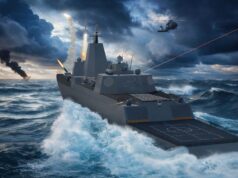
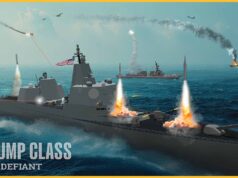
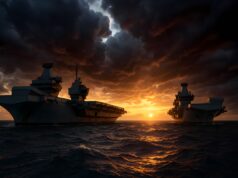


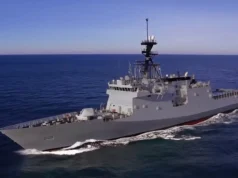
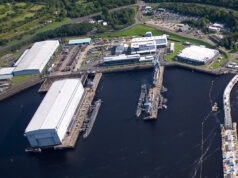

What could possibly go wrong…………… 😉
I hope that Shared Infrastructure is a fancy way of saying that they took a bunch of existing, off the shelf, OS code and configured it the way they needed, including running virtual machines on hefty servers to share hardware.
It would be *very* bad if Bae had developed a new operating system from scratch. That would mean it would take years to get all the bugs out.
Formal methods of verification can assure you a relativily smooth experience with new software. But the question is, did they use any?
I’ve got an old spectrum if you need it Bae?
A few years back at one of the lamented Navy Days at Portsmouth I was able to take a wander through HMS Daring – and you can imagine my surprise when I spotted the Windows XP logos all over the computer systems….. I asked and was told that this was a “step change” for the Type 45’s. I think I was more concerned at the large hole in the fore deck where the VLS should have been fitted.
Oh well, you can’t have everything….
[…] the new UK fleet of destroyers were going to also be based on historic Windows XP derived systems. https://ukdefencejournal.org.uk/no-our-new-aircraft-carriers-dont-run-on-windows-xp/ Luckily that proved to be unfounded, however the possibility of legacy systems still being used […]
I have to say that I still greatly prefer the old Windows XP.
It is possible for me to replace individual files to make software repairs. I can interupt the start up procedure.
With Windows 10, I still struggle to even make the screen look like I want it to.
When it goes wrong the screen goes blank and if I am lucky I might be able to access the Task Manager but nothing much else. Actually fixing it without starting from scratch and reloading Windows is beyond me.
I appreciate that it is me who cannot do these things but within a few weeks I was able to find my way around XP and after two years I have made virtually no progress at all with Windows 10 !
I’m sick of unreliable Windows. How can I get a copy of Shared Infrastructure for my laptop 🙂
[…] https://ukdefencejournal.org.uk/no-our-new-aircraft-carriers-dont-run-on-windows-xp/ […]
Government/Defence shouldn’t use proprietary software, only FOSS!
If the Governments used FOSS we wouldn’t have the ransomware at the NHS or others, we wouldn’t have had viruses, spyware or other malware and we would have saved tens of Billions, YEARLY!
There is nothing wrong with Windows XP.
The vulnerability is concerned with connections to the internet, and specifically whether people inside are allowed access to the internet. If you let people do personal emails, www browsing, IM, etc, then any OS is vulnerable, no matter how recent it is and whether Micro$oft still publish patches for it.
The NHS hack was possible only because some idiot configured a mission critical system with internet access and allowed staff to use it for their personal stuff.
In the NHS, the military, etc, personal internet stuff should be allowed only on a PC dedicated for the purpose. So you could set one up in say the canteen and have it going out directly to a satellite broadband connection, via a NAT router obviously, and on a different physical network to the rest of the ship (not just a different subnet on the same physical ethernet connection).
But somehow I don’t think the Navy is so stupid as to not know all this…